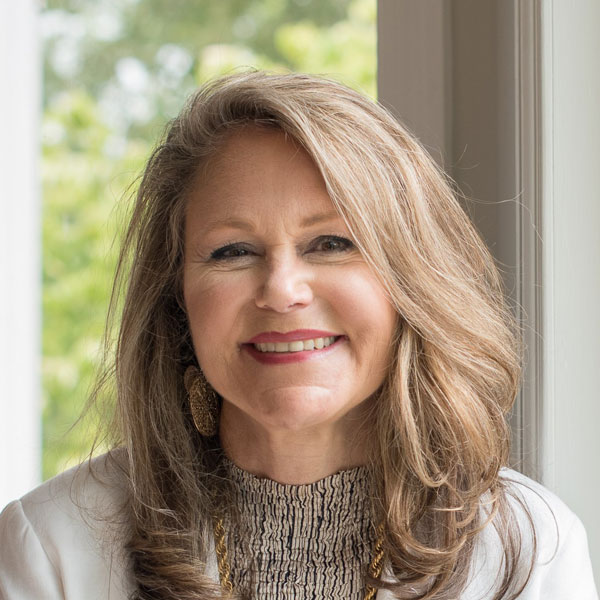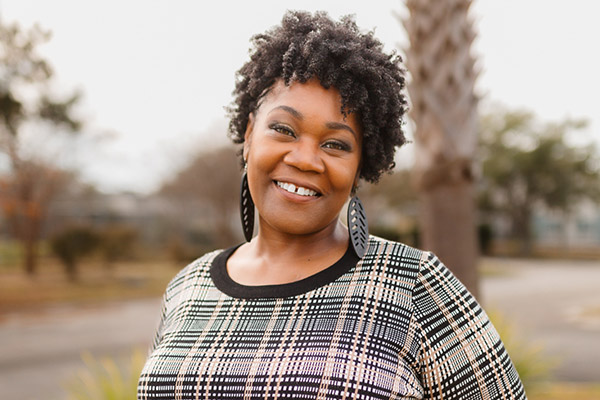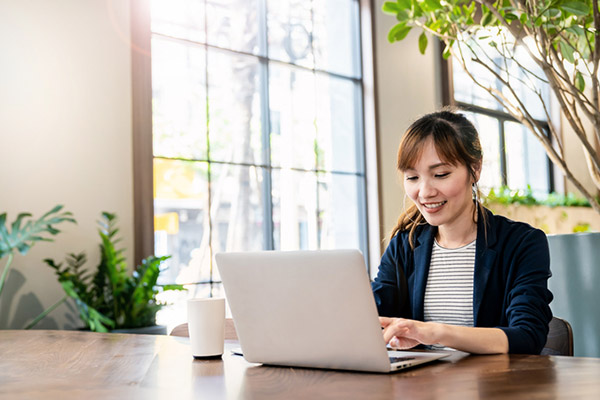03/14/2023

Design can be simple. Maybe that’s why it’s so complicated. In this episode of The ABMP Podcast, Kristin and Darren are joined by Carolyn Boldt, VP/Director of Design for CrossFields, to discuss what to look for when evaluating office space, how owning versus leasing plays a role in how you plan your design, why design is key to client retention, and design trends that have real staying power.
Resources:
Online Products Available Here (Use code ABMP30 for Discounts): https://chiropracticofficedesign.com/abmp/



Anatomy Trains: www.anatomytrains.com
AnatomySCAPES: www.anatomyscapes.com
Anatomy Trains is a global leader in online anatomy education and also provides in-classroom certification programs for structural integration in the US, Canada, Australia, Europe, Japan, and China, as well as fresh-tissue cadaver dissection labs and weekend courses. The work of Anatomy Trains originated with founder Tom Myers, who mapped the human body into 13 myofascial meridians in his original book, currently in its fourth edition and translated into 12 languages. The principles of Anatomy Trains are used by osteopaths, physical therapists, bodyworkers, massage therapists, personal trainers, yoga, Pilates, Gyrotonics, and other body-minded manual therapists and movement professionals. Anatomy Trains inspires these practitioners to work with holistic anatomy in treating system-wide patterns to provide improved client outcomes in terms of structure and function.
Website: anatomytrains.com
Email: info@anatomytrains.com
Facebook: facebook.com/AnatomyTrains
Instagram: www.instagram.com/anatomytrainsofficial
YouTube: https://www.youtube.com/channel/UC2g6TOEFrX4b-CigknssKHA
AnatomySCAPES—created by and for hands-on professionals.
As therapists, we want more than labeled charts of muscles, nerves, and bones. We crave anatomy education that informs our touch, and we want the know-how for working with the “stuff” in between. We want the whole story.
Led by AnatomySCAPES co-directors, and ABMP Massage & Bodywork magazine columnists, Rachelle Clauson (FRS Fascial Net Plastination Project) and Nicole Trombley (Equilibrio Massage), our in-person lab workshops are in sunny San Diego, not far from the ocean. We teach you what the tissues look like, feel like, how they move, and how they relate to their surroundings.
Your eyes and hands learn to “see” what they could not see before. Come join us in the lab in 2023!
Website: www.anatomyscapes.com
FB: facebook.com/AnatomySCAPES
IG: instagram.com/anatomyscapes
YouTube: youtube.com/@anatomyscapes
Email: info@anatomyscapes.com
0:00:00.1 Speaker 1: Are you passionate about massage and love learning about the human body? Take your palpation skills to the next level with AnatomySCAPES Dissection Lab workshops, designed specially for touch therapists. This March 8th and 9th, or May 3rd and 4th, you can journey into the matrix with AnatomySCAPES co-directors Rachelle Clauson and Nicole Trombley as they take you on a profound journey through the human fascial system. Rooted in current scientific research, AnatomySCAPES dynamic trainings help you see, feel, and understand what lies beneath the surface. Visit anatomyscapes.com/abmp to learn more.
0:00:53.0 Darren Buford: I'm Darren Buford.
0:00:54.4 Kristin Coverly: And I'm Kristin Coverly.
0:00:55.9 DB: And welcome to the ABMP podcast, a podcast where we speak with the massage and body work profession. Our guest today is Carolyn Boldt. Carolyn is passionate about holistic health and wellness and an outspoken advocate that the environment of your space impacts your success. With over 40 years of experience in the commercial interior industry, she holds a bachelor's degree in interior architectural design from the University of Texas at Austin, is NCIDQ certified, a registered designer, a lead AP, and professional member of the International Interior Design Association. In 2004, she and her husband Scott co-founded CrossFields as a design build firm in Atlanta.
0:01:38.4 DB: In 2011, they changed their focus to expand the impact of holistic health by elevating the public's image of alternative medicine through virtually creating outstanding healing environments nationwide. For more information, visit chiropracticofficedesign.com/abmp and enter discount code ABMP 30 for online products. Hello, Carolyn and hello, Kristin.
0:02:01.6 Carolyn Boldt: Thank you for having me.
0:02:04.3 KC: Carolyn. Welcome to the pod. We're excited to talk with you about the design and environment of massage and body work treatment rooms and office space. I think we all have a sense that those two things impact client comfort and functionality. But how did the design and environment of our spaces impact our success as practitioners? Let's start there.
0:02:22.6 CB: So when you are involved in holistic health care and body work and all of that, most of the time, you would tell me that that is a choice that your clientele are making a choice to come to you. So think about when you make a choice to go to a retail store, it's a similar process for that potential customer, they're going to walk into your space and they're going to size up you and everything about their experience the moment that they walk in. And so what you want to do is be intentional that your space reflects exactly what you want them to expect when they come in. So that can be all over the place, but that's the gist of what we're talking about.
0:03:10.8 DB: So Carolyn, what five things should you look for when evaluating your office space?
0:03:16.6 KC: And I'm going to jump right in. Sorry, Carolyn. Before you answer that question, I'm going to ask Darren, are you referring to the office space where someone might have their desk and do all their bookkeeping and finance and marketing or their treatment room where they're actually doing the sessions and or both?
0:03:33.2 DB: Oh, that's excellent. Both is probably the answer here. But for sure, the treatment room, I guess it's whether you have a visual space as you enter like a front desk area. So we could be talking to a wide variety of MTs on this podcast right now. So let's address both of those options.
0:03:49.7 KC: Yeah, whether they have a reception area or not. Is it a suite of offices, all the things.
0:03:52.7 CB: So the first thing you want to do is want to who's your ideal patient? Who's your ideal customer? What is the one? It's the one you market to. It's the one that you hope comes in. If you've done any business, they talk about what avatar, you'll have an avatar, okay? Someone that's ideal. So when you're looking at that and you're looking at the services that you're offering to meet with them, all of that has a emotional impact that you're trying to create for those people. And the first impression that you have for those people when they come in because they're going to size up you, especially a new customer. That's what we're really talking about, attracting new customers, new clientele. That first impression and everything that they're feeling about it is going to make a choice, help them make a choice one way or the other. So yes, whoever... Let's just talk about the front desk.
0:04:46.5 CB: So yes, whoever's behind the front desk is very impactful. We want to make sure we have the right people, etcetera. But just as you walk in, they're going to size up what that space is all about. Let me give you an example that may help. So when we teach classes, I talk about the difference between in retail of a Walmart and a high-end designer store, okay? Both of them very, very, very intentionally designed to attract their ideal customer. Okay, so you think about Walmart and the way that it's designed, it's very much the low price leader and so there's bright lights, hard floors, lots of signage everywhere, everything about that helps them be successful with their niche and what they're doing. You go all the way to the other side and you go to maybe a very high-end designer store, let's say a Louis Vuitton or something, totally opposite experience, everything very intentionally designed to create a buying environment for their ideal customer.
0:05:52.5 CB: You don't see prices everywhere, the colors are very neutral, the lighting is varied, it's not just a wash of light, it creates a soft... You expect high customer service, all of those things are very intentional to help support that buying. So that's what you need to think about in your environment. Let's call it an environment, whether you walk into a front lobby and you've got retail everywhere or if you're in a massage office inside... I know we do a lot of chiropractic offices that have massage offices inside of them. And so how can you make that space as wonderful as possible for that clientele?
0:06:35.1 DB: Okay, Carolyn, what things should you look for when evaluating an existing space that a massage practitioner would have?
0:06:40.3 CB: So we actually have for a five-point designer checklist and that was one of the things that we offered as part of our free giveaway. And it is actually, we put it together as the first five things we would do as a designer when we're evaluating what to do to renovate a space. So the first thing we say is that you need to find someone else besides yourself to help you evaluate it because we are too close to it, it's too familiar to us. So ideally you would find somebody that pretty much matches your avatar so they can give you an honest opinion and obviously somebody that would give you an honest opinion, and then to help you walk through the space yourself. Then the first thing we want to look at is, is it cluttered? That creates a lot of negative energy, it doesn't function well, it can be too busy and create too much energy so is it cluttered?
0:07:38.2 CB: And I'm going to use an example of, do you walk into the front desk and there's all kinds of pamphlets across it, nobody's going to pay attention to all those pamphlets so you just want to do one focused, think of the concept of being focused. Do you have the storage that you need to house the things that you need... The supplies that you need, are they all out cluttered everywhere? So just keep it simple and neat and tidy will help that patient and help that client and that customer come in and feel more at ease. So is it dated, meaning that if you walk into a space... Think about if you walk into a restaurant that you walk in and it's dated, you immediately have this bad... You don't have the best impression you can have of the space, right? So just keeping up to date and everything's going to date 7 to 10 years, it just is.
0:08:28.8 CB: So think about your clothing, that's the cycle of items and styles that date, colors date, all of those things. So is it dated and what can you do to keep it up... To get it updated? Some things are more expensive than others like carpet, but paint's one of the least expensive things you can do to help get it updated. Another thing we look at are things worn out. That kind of goes back to the clutter, but not exactly. Those things create just a negative energy and you don't have to live with that. You know what I'm saying? Things that are broken, etcetera. Another thing we look at is lighting. In the space, now in a massage room, obviously lighting is really important. You want to make sure you have a low light level during treatment, but you want to make sure it's bright enough to clean it when you're not in there, correct?
0:09:20.3 CB: So lighting, and we use a lot of lighting thinking about when you're walking into the space and how people create that impression. Back to the Walmart, a wash of light creates a really high energy and just not a lot of interest, where variation lights create interest. Obviously the lower the light level, the softer and the quieter everything is.
0:09:41.6 KC: Let's take a short break to hear a word from our sponsors.
0:09:44.9 Speaker 1: Anatomy Trains is excited to invite you to our latest in-person fascial dissection workshop, April 10th through 14th, 2023 in Boulder, Colorado. Join Anatomy Trains author Tom Myers and master dissector Todd Garcia on this voyage of discovery. Visit anatomytrains.com for more information.
0:10:10.8 KC: Let's get back to our conversation. Okay, Carolyn, here's a question for you that may be really specific to massage practitioners versus other clients you might work with. But some practitioners in our field may own their own spaces and or have treatment rooms in their own homes, but the majority of us rent space and often share that space with other practitioners. We might be in a suite with other massage therapists, body workers, physical therapists, psychotherapists, it could really vary. Talk to us about how leasing a space impacts our design decisions because there may be some restrictions about things we can change in a space or not. We're sharing with other people, everyone has to agree. Talk to us about what are some of those things that we can do that make a big impact but are still allowed in a leasing situation.
0:11:01.7 CB: Wow, that's a hard one because there's so many different ways and possibilities you could be dealing with, right? I know we worked with one massage therapist, she basically had a horrible space that first impression like that curb appeal of walking in before they got to her room and she asked what she could do with her room and it's like, it's just like you need to cut the grass if you're selling the house the curb appeal is a problem. Consider it when you're evaluating what you're going to lease what you can do and is it really going to attract, is that first impression going to attract the people that you have. And really obviously when you're leasing a space especially when you're leasing it with a bunch of other people, it's you've all got to come into agreement of what you are trying to do. If once you all come into agreement then you can design it as a cohesive group. But if you just get to design that one little room all by yourself and nothing else really goes with it, it's a disconnect.
0:12:02.2 KC: Yeah, that absolutely makes sense. And I'm guessing too that even within the restrictions of leasing a space if there are curtains in the room if there's a window you could change... You could bring your own curtains in and that changes with the texture and colour that can change some of the feel. Maybe you can work with your landlord to get permission to paint the space. Like I'm guessing there are some things you can do that aren't permanent changes but that can make a big impact.
0:12:27.4 DB: Kristin you've worked in a variety of places. What has... How strict have some of those been? How flexible have some of those been? Can you tell us a little bit about that?
0:12:36.8 KC: Yeah, I absolutely have worked in so, so, so many different setups and varieties and varying office spaces. For the most part it's the soft things, yeah, that we can change. We bring in, just like Carolyn was saying, we bring in our own decor pieces, we bring in the lighting, we cover the fluorescent light with a beautiful cloth if needed we do all of those things. I've had some spaces where they have allowed us to paint the walls, others we're not allowed, so it really does vary based on the space you're in in the office. There are also things you absolutely will never be able to control. One of them... One of our office spaces that a friend and I were leasing was in a PT clinic, PT suite of offices, but it was right across the street from the fire station. So when they had a call, when there was an alarm, that was really noticeable and real loud.
0:13:30.3 KC: So we started to just make it a joke and give a discount. Oh, you got the fire discount and we would, you know, give that client $5 off if they happen to get a call during their session or... Some of it you just have to lean in and, and go with it. We've also had spaces where a friend and I releasing from someone else and they had like this big quilt hanging on the wall that we didn't enjoy. So we put our own artwork under the quilt and would take the quilt off the wall when we were using the room and then magically put it back up when we were leaving. Like, so you can get really creative in the way that you make this space work for you, but also that multiple people can make the space work for them and feel like them.
0:14:09.0 DB: Carolyn, for any listeners that are maybe doubting the idea of redoing or designing their space, can you tell us what the ROI of updating and investing in your, in your design can be?
0:14:22.3 CB: So what we see with our doctors is somewhere between 10 and 20% increase in their income when they renovate their space. And the percent, it depends on how successful they were before or how much services they're adding and things like that. But what we do see a lot, I have a testimony on our website that had a doctor that had an office. He bought the practice from someone else and he was renting the space. They did what they could to make it look better. He was networking all over the place, trying to get new patients, built out a new office. And within the first couple of weeks, some of the people he'd been networking with for years, doctors, bankers, lawyers came in just like that because the space emulated what their expectations were. So another thing that happens is doctors can raise their prices. No, so massage therapists can raise your prices and things just when that space emulates that luxury, if that's what's important to you. The other thing you see is just it retains your practice, people keep coming back. So you want to attract them, but you want to keep them to come back.
0:15:32.8 KC: Absolutely. Okay, here's a question for you. So I think we all can dream and get excited about what we do if we had a really big budget to make changes to our space. So we've gone into our space. We've used your five tips to evaluate. We're going to make some decisions. So there's the big budget things we can do. And then what about some ideas for people who might not have a lot of money to spend right now to make change, but they're looking to do a few things. Like what are the things that give us the most bang for our buck if we've got a limited budget?
0:16:03.1 CB: So I say colour and lighting. Those are the biggest bangs for your buck. So colour meaning paint, doing a new fresh paint, maybe a new colour, a new something that... Now I know that when especially in the treatment rooms, when the rooms go dark, you don't really see the paint, but you do still see the paint. Do you know what I'm saying? So paint is one of the easiest, most inexpensive ways to freshen up anything. And then we were talking a little bit earlier about lighting and what can you do to vary the lights, even if you buy a new lamp, something that adds light to the ceiling that just kind of is soft and gentle and things of that sort. So those are the two things I would say first. And then the next thing I would do is look at your art on your walls and things that people see when they walk in. I know that the anatomy is real important in a massage room when they talk, but is it framed nicely or is it thumbtack to the wall? You know what I'm saying? Just, it doesn't have to be expensive. You can go to an office like a Michael's or something and get all kinds of frames very inexpensively. So just looking at that, those type of little things.
0:17:14.1 KC: And two, the last time I changed the paint colour in my massage space, I actually asked my clients for their input. So I had a couple colors that I really liked and I said, "Okay, guys you're in this space. This is your space as much as mine. Which do you prefer?" And so they all got to vote. So that was a really fun way to remind the clients that they're part of... This is the experience that this is their space as well. And that's an easy way to do that.
0:17:39.7 CB: Absolutely. And it goes full circle to appealing to your avatar. And yeah, if you don't know what your avatar likes, ask them. Absolutely ask them. What is it that's important to you? What's absolute? That's a great idea. Great idea.
0:17:55.5 DB: It's so important before you're thinking about designing something to check in with this avatar or your ideal client to make sure that all of that's being catered to the exact people that you want to bring in. And we talk a lot about in Massage and Bodywork magazine and in our various content outlets that we do here about niching, your particular people you want to work with. I think you're just saying that that that you're reiterating that by saying your avatar here. Would you agree with that, Kristin?
0:18:23.2 KC: Absolutely. Yeah, absolutely. It all comes back to who do you want in your space and let's make that space comfortable for them and a space they want to keep coming back to.
0:18:33.1 DB: Absolutely. I want to thank our guest today, Carolyn Boldt. For more information about Carolyn, visit chiropracticofficedesign.com/abmp and inter discount code ABMP 30 for online products. Thanks, Carolyn. And thanks, Kristin.
0:18:49.4 CB: Thank you.
0:18:50.9 KC: Thanks so much, Carolyn, for that great conversation and getting us all to look at our spaces in different ways and make some fun changes.
0:19:05.6 S1: Members are loving ABMP Five-Minute Muscles and ABMP Pocket Pathology, two quick reference web apps included with ABMP membership. ABMP Five-Minute Muscles delivers muscle specific palpation and technique videos, plus origins, insertions and actions for the 83 muscles most commonly addressed by body workers. ABMP Pocket Pathology, created in conjunction with Ruth Werner, puts key information for nearly 200 common pathologies at your fingertips and provides the knowledge you need to help you make informed treatment decisions. Start learning today. ABMP members log in at abmp.com and look for the links in the featured benefits section of your member home page. Not a member? Learn about these exciting member benefits at abmp.com/more.





